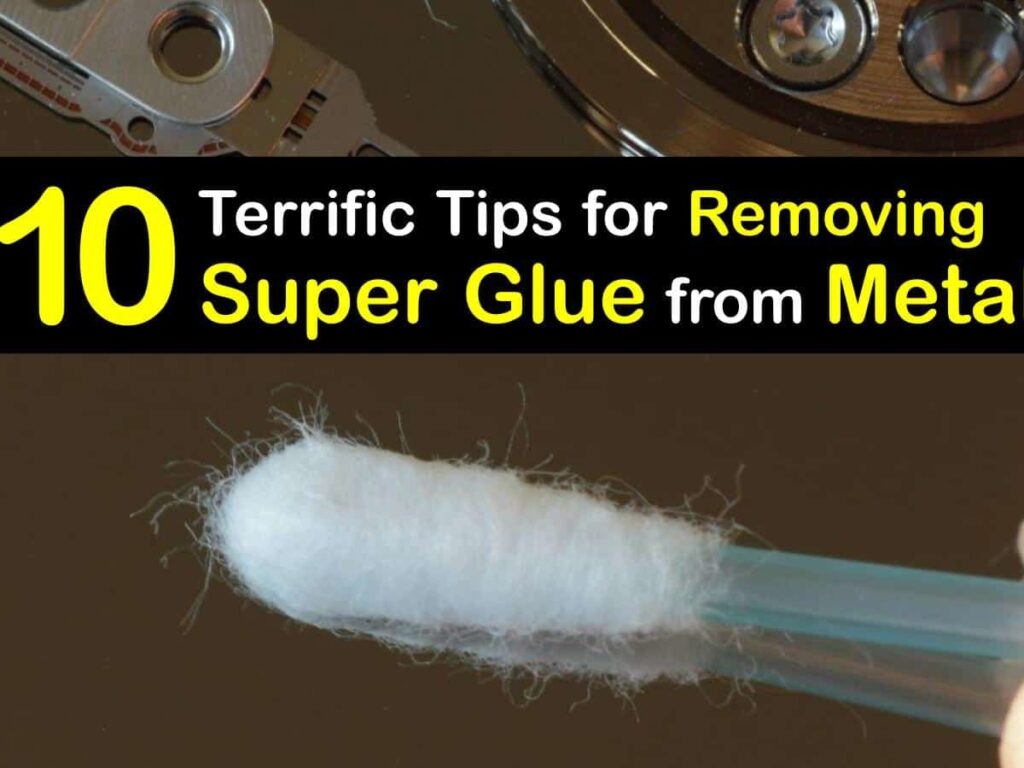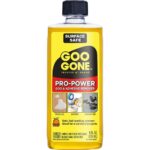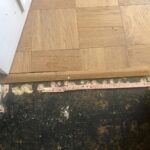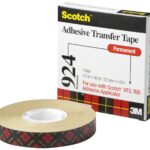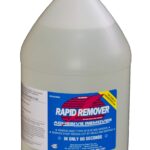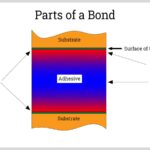Dissolving glue on metal can be a tricky process. To ensure a successful outcome, you should use the right products and techniques. First, choose a solvent that is suitable for the type of glue used. Common choices include acetone and mineral spirits. Make sure to wear protective goggles and gloves while working with these solvents.
Once you have the right solvent, begin by applying it to the glue in small amounts. Use a cloth or brush to spread the solvent around the glue and help loosen it. After you have applied the solvent, let it sit for several minutes to give it time to break down the adhesive. Once the glue has loosened, you can use a putty knife or razor blade to scrape it away. Work slowly and carefully to avoid damaging the metal surface. Finally, use a clean cloth to wipe away any remaining residue. If the glue is still present, you may need to repeat the process with more solvent or use a stronger solvent. Once all traces of the glue have been removed, your metal surface should be as good as new.
How to remove dried glue from metal
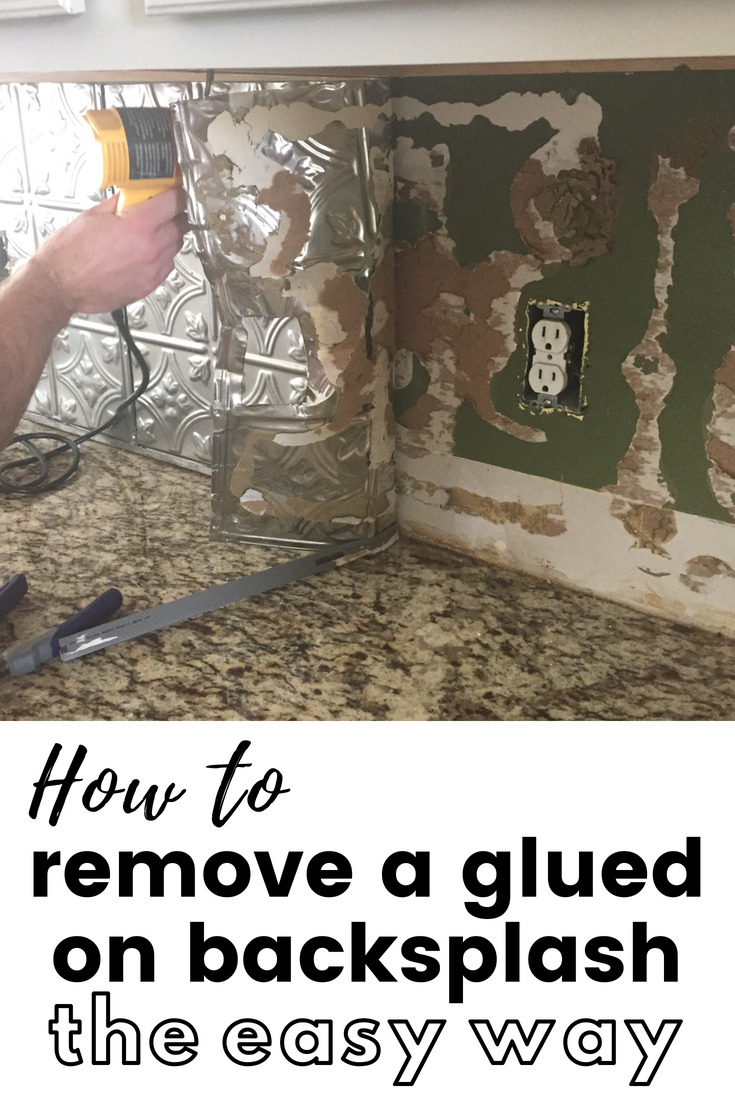
Removing dried glue from metal can be a tricky task, but it is possible with the right technique. To dissolve glue on metal, start by softening the glue with hot air or hot water. Then use a putty knife or a toothbrush to scrape away the softened glue. This can be done carefully, as metal is a delicate material that can easily be scratched. For tougher glue, use a specialized solvent to dissolve it.
Products like acetone or mineral spirits are great for this purpose. Before you apply the solvent, make sure to wear protective gloves and goggles to avoid any hazardous exposure. After the glue has been dissolved, you can use a soft cloth to clean away any residue from the metal. Use a mild detergent and warm water to remove the solvent and any remaining glue. Be sure to rinse the metal thoroughly and dry it completely for best results. If the glue stains have not completely disappeared, try using a steel wool pad or fine sandpaper to remove them. Be careful not to damage the metal in the process. Finally, use a polish or wax to protect the metal from further damage. Removing dried glue from metal may be a difficult task, but with the right technique it can be done easily. Follow these simple steps and you will be able to dissolve glue on metal without causing any damage.
How do you get hard glue off of metal?
Removing hard glue from metal objects can be a tricky task. However, with the right approach and materials, it is possible to dissolve the glue and get it off the metal surface. One possible method is to use a combination of heat and an appropriate solvent. Heat the metal surface with a hair dryer or heat gun while applying the solvent with a cloth or brush. The heat will soften the glue, making it easier to remove.
Another method is to use a specially designed chemical solvent such as paint stripper. This type of product is formulated specifically to dissolve glue, making it easier to remove. Be sure to read the directions and safety information on the product before using it. You can also try using a soft cloth and soapy water. Soak the cloth in warm, soapy water and then gently rub the area until the glue starts to loosen. Once the glue is loose, use the cloth to wipe it off the metal surface. In some cases, the glue may be too tough to remove with these methods. If that is the case, you may need to use a special type of tool such as a scraper or knife to peel away the glue. Be sure to use caution when using a sharp tool and avoid scratching the metal surface.
Does WD-40 remove super glue?
WD-40 can be effective in removing super glue from metal surfaces. It is easily available and can provide an effective solution to dissolve glue on metal. To start off, spray the WD-40 directly onto the glue. Let it soak in for a few minutes before trying to scrape it off with a cloth or a plastic scraper. You may need to repeat the process multiple times to completely remove the glue. With a bit of elbow grease, you can eventually dissolve the glue completely. Additionally, you may want to use a mild detergent solution to help remove any stubborn adhesive residue.
Can vinegar remove super glue?
Removing glue from metal can be a tricky task. Fortunately, there is an easy and effective solution. Vinegar can be used to dissolve super glue from metal surfaces. It is important to use white vinegar instead of other types, as it is the most effective. To dissolve the glue, simply add a few drops of vinegar to the affected area and allow it to sit for a few minutes.
After a few minutes, the super glue should begin to loosen and can be easily removed. To finish, use a damp cloth to wipe away any remaining residue. With this method, super glue can be quickly and easily dissolved from metal surfaces.
Will vinegar remove glue from metal?
Removing glue from metal can be a tricky task. Fortunately, there is a simple method to dissolve glue off of metal surfaces using vinegar. Vinegar is a common household item that is acidic and can break down the chemical bond between the glue and the metal surface. To remove the glue, start by soaking a cloth or paper towel in white vinegar. Place the soaked cloth on the glue and leave it for at least one hour.
After an hour, the glue should be softened enough to scrape off with a blunt object like a butter knife or plastic scraper. If some of the glue still remains, repeat the process. Once all of the glue is removed, rinse the metal with clean water and dry it with a cloth. You may also need to scrub the surface with steel wool or a wire brush to remove any residue. Vinegar is an inexpensive and effective way to remove glue from metal surfaces. It is important to note, however, that vinegar should not be used on painted surfaces. If there is paint involved, you may want to opt for a commercial-grade adhesive remover. Overall, vinegar is a safe and easy way to dissolve glue from metal surfaces. With a little elbow grease and patience, you can restore your metal surfaces back to their original condition.
Does WD-40 remove adhesive?
It’s a multi-purpose lubricant and solvent that can be used to remove adhesive. WD-40 helps to dissolve glue quickly and easily. All you have to do is spray the WD-40 onto the glue and let it sit for a few minutes. Once the glue has softened, you can use a cloth or paper towel to wipe it away. It’s important to make sure you use the WD-40 on the glue only, and not the metal surface. This will prevent damage to the metal and make sure the adhesive is completely removed. After you’re done, you can use a metal cleaner to polish the surface and make it look like new again.
Does WD-40 Remove metal glue?
It has many uses, including being used to dissolve glue from metal. It can be used to dissolve metal glue without having to resort to strong chemical solvents or other harsh methods. WD-40 works by penetrating the metal glue and dissolving it. To use WD-40 to dissolve metal glue, spray the WD-40 directly onto the glue. Let the WD-40 sit for a few minutes and then use a rag or paper towel to wipe away the glue.
You can also use a plastic scraper to gently scrape away the softened glue. It is important to note that WD-40 does not work on all types of metal glue. It is designed to work on some but not all types of metal glue. If the glue does not dissolve with WD-40, you may need to use a different method or product to dissolve the glue. If WD-40 does not work or you would prefer a gentler method, there are other ways to remove metal glue. For example, you can use a mild soap and water solution to loosen the glue. You can also use a solvent such as rubbing alcohol or acetone to dissolve the glue. No matter what method you use to dissolve metal glue, it is important to take safety precautions. Wear gloves, goggles, and protective clothing when working with any solvent or chemical. Be sure to dispose of all chemicals or solvents in an appropriate manner.
How do you remove hardened glue?
Removing hardened glue from metal can be a tricky task. To successfully dissolve the glue, you must use a solvent specifically designed for the task. Depending on the type of glue you are attempting to dissolve, the solvent can vary. For example, contact cement requires a solvent such as acetone or toluene. Many commercial products designed to dissolve glue can also be used.
Before starting, make sure you wear gloves, safety glasses and a mask for your own protection. Apply the solvent to the glue and let it sit for approximately a minute. Once the solvent has had time to work, use a metal scraper or putty knife to scrape away the softened glue. You may have to apply several applications of solvent if the glue is particularly tough. Be sure to clean the area with a rag or brush after all the glue has been removed. Using a solvent that is safe for the type of metal is important since some cleaners can damage the metal surface. By following these steps, you can effectively remove hardened glue from metal.
Does WD-40 remove glue?
It works by breaking down the molecules in the adhesive and making it easier to remove from the metal. To use WD-40 to dissolve glue on metal surfaces, first make sure the area is clean and free of dirt, dust, and grime. Spray the WD-40 onto the adhesive, letting it sit for a few minutes. Then use a cloth or a brush to scrub the glue until it is completely removed. For particularly stubborn adhesives, you may need to repeat the process a few times. Once the glue is completely gone, make sure to wipe away any residue with a damp cloth. By using WD-40, you can easily dissolve glue on metal surfaces without any difficulty.
Can you soften hardened glue?
It is possible to soften hardened glue when it is on metal. There are a few different ways to do this that will help dissolve the glue and make it easier to remove. One of the most effective methods is to use hot water. Heat up some water to a temperature that is comfortable to the touch, then use a cloth or paper towel to apply it to the metal surface where the glue is located. The heat will help to break up the glue and make it easier to remove.
You can also use a solvent like acetone to dissolve the hardened glue. Acetone is a powerful solvent that can break down the bonds between the glue and the metal surface. Just apply a small amount of the solvent to a cloth and use it to wipe away the glue. Another option is to use a mechanical tool to scrape away the glue. If you don’t want to use acetone or hot water, using a tool like a razor blade or a putty knife can help to loosen the glue and make it easier to remove. Finally, you can use a product specifically designed to dissolve glue. These products are usually made with chemicals that can help to break down the glue and make it easier to remove. No matter which method you decide to use, it is important to remember to be careful when trying to dissolve glue on metal. You don’t want to damage the surface of the metal or cause any harm to yourself.
How do you remove tacky glue from metal?
Removing tacky glue from metal can be a difficult task. Fortunately, there are a few steps you can take to make the process easier. The first step is to carefully scrape away as much of the glue as you can with a putty knife or a razor blade. Be sure to work slowly and carefully, so you don’t cause any damage to the metal. After you’ve scraped away as much as you can, you should apply some heat to soften the remaining glue.
You can do this with a heat gun, a blow dryer, or even a hair straightener. Keep the heat source moving continuously to avoid damaging the metal. Once the glue has softened and become malleable, you can use a cloth and some alcohol or a citrus-based cleaner to wipe away the remaining glue. Finally, once all the glue has been removed, you should wipe down the metal with a clean cloth and some mineral oil to make sure it’s free of any residue. This will also help protect the metal from any further damage. By following these steps, you should have no problem removing tacky glue from metal.
Does wd40 remove super glue?
Removing super glue from metal can be a tricky job. Luckily, WD40 is one of the best solutions for dissolving glue on metal. WD40 works as a solvent, which helps break down the super glue’s strong bonds. To use it, simply spray a generous amount onto the glued area. After a few minutes, use a piece of cloth or a scrub brush to gently remove the glue.
Be sure to rinse the area with warm water after the WD40 has done its job. This will help to get rid of any WD40 residue left on the metal. With a little bit of patience, WD40 can help you dissolve glue on metal safely and effectively.
How do you dissolve glue?
If you need to dissolve glue from metal, there are a few steps you can take. The first step is to soften the glue using heat. This can be done by using a blow dryer or a heat gun to gently heat the affected area. The second step is to apply a solvent to the glue. Common solvents such as acetone, lacquer thinner, or rubbing alcohol can be used.
Simply apply the solvent to the glue and wait a few minutes for it to work. The third step is to scrape the glue off the metal. You can use a plastic putty knife or a razor blade to scrape the glue off the metal. If the glue is still not coming off, you may need to apply more heat or solvent. The fourth step is to clean the metal. Once the glue is off the metal, it’s important to clean the metal with a degreaser to remove any residue. Finally, it’s important to dry the metal completely. This can be done with a towel or a blow dryer. Make sure the metal is completely dry before attempting to re-glue it. Following these steps should help you dissolve glue from metal.
How to remove rubber coating from metal?
Removing rubber coating from metal can be a tricky process. The first step is to soften the rubber coating by heating it. To do this, use a heat gun or blowtorch to heat the affected area until the rubber becomes soft and pliable. Once the rubber is softened, use a metal scraper to peel the rubber off the metal surface. To dissolve the glue on metal, you’ll need to use a chemical solvent.
Try a solvent such as acetone or isopropyl alcohol to dissolve the glue. Make sure to wear protective gloves and eyewear to protect yourself when using these solvents. Apply the solvent to the glue and let it sit for a few minutes before wiping away the glue with a cloth or paper towel. After removing the rubber coating and glue, the metal surface should be clean. Use a metal cleaner and a soft cloth to polish the metal, removing any residue. Once the metal is clean and dry, you can proceed with your project. By following these steps, you can safely and effectively remove rubber coating from metal and dissolve glue on metal. Be sure to take the necessary safety precautions and use the right tools for the job.
How do you remove epoxy from metal?
Removing epoxy from metal can be a tricky task. The best way to do this is to use an epoxy remover. This is a chemical that is specifically designed to dissolve the epoxy from metal surfaces. You will need to apply the epoxy remover to the metal surface, ensuring that the entire area is covered. Allow the remover to sit for a few minutes, then gently scrape away the epoxy using a plastic scraper or putty knife.
If the epoxy is still not dissolving, you may need to use a heat gun to heat the metal surface. This will help loosen the epoxy and make it easier to remove. Be sure to wear safety goggles, gloves and protective clothing when using an epoxy remover. Additionally, be sure to keep the remover away from children and animals, and make sure to always read and follow the instructions on the remover’s container. Once the epoxy has been removed, wash the metal surface with water and soap to remove any residue. Then dry the metal thoroughly before applying a new coating of epoxy or any other substances.
How to remove a metal coating from an object?
Dissolving glue on metal can be a tricky task, but the good news is that it is possible to remove the glue by removing the metal coating from the object. Here are the steps you should take to do this:
- Begin by cleaning the surface of the object that has the glue on it with a soft cloth and some warm, soapy water.
- Once the surface has been cleaned, use a metal brush to gently scrub the surface of the object. This will help to loosen any remaining glue.
- After the scrubbing is complete, use a chemical remover designed for metal coatings. Make sure to follow the directions carefully and to wear protective gear while using the product.
- Once the chemical remover has been applied, let it sit for the amount of time recommended by the manufacturer.
- Finally, scrape away the dissolved glue and metal coating with a plastic putty knife. Make sure to wear protective gloves while you do this to protect your hands. With these steps, you should be able to successfully remove the metal coating and dissolve the glue from an object.
